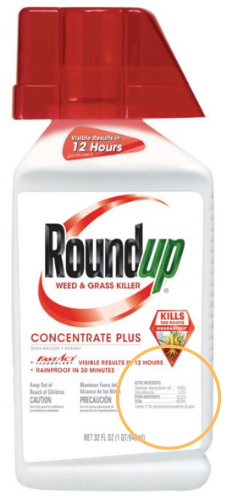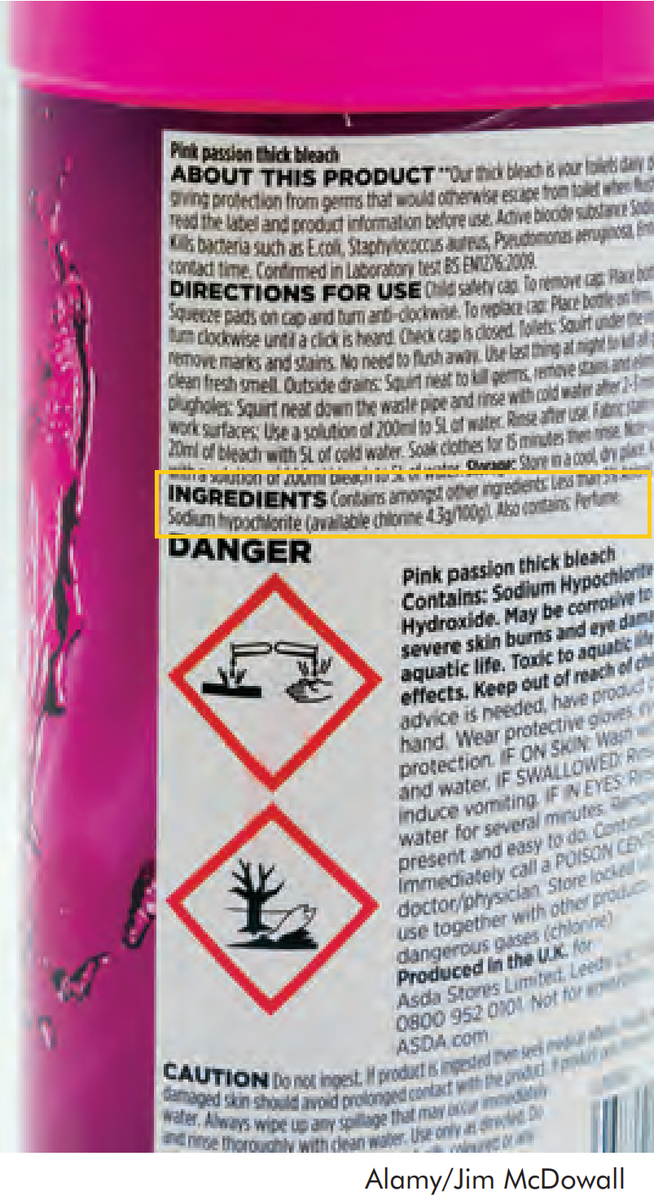Gateway on Pesticide Hazards and Safe Pest Management
How To Find Ingredients in Pesticide Products
Beyond Pesticides offers resources below to evaluate the health and ecological effects of specific chemical exposure from ACTIVE INGREDIENTS in pesticide products, as well as regulatory information and supporting scientific documents. Because various pesticide products can contain more than one active ingredient, it is important to READ the LABEL to determine chemical components.
With 192 different active ingredients and counting, it is essential to establish the connection between the use of these chemicals and their respective hazards.
View the step-by-step guide on how to search for the active ingredient(s) in pesticide products below:
- Go to U.S. EPA's Pesticide Product and Label System and enter the product name. The generic product name may vary.
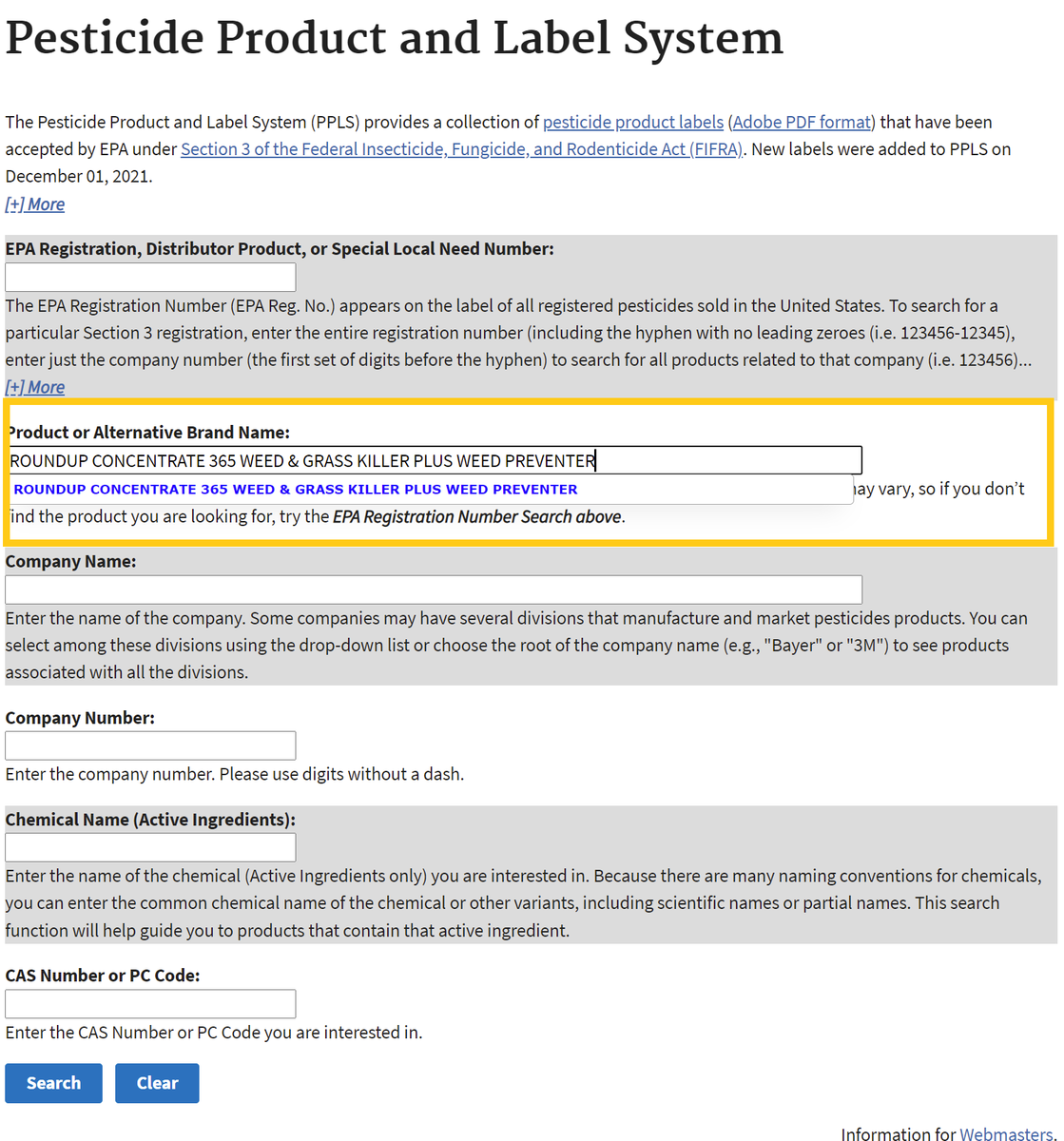
- After searching, click on the chemical ingredients tab or the link for the most recent label to find Active Ingredients.
Chemical List Label List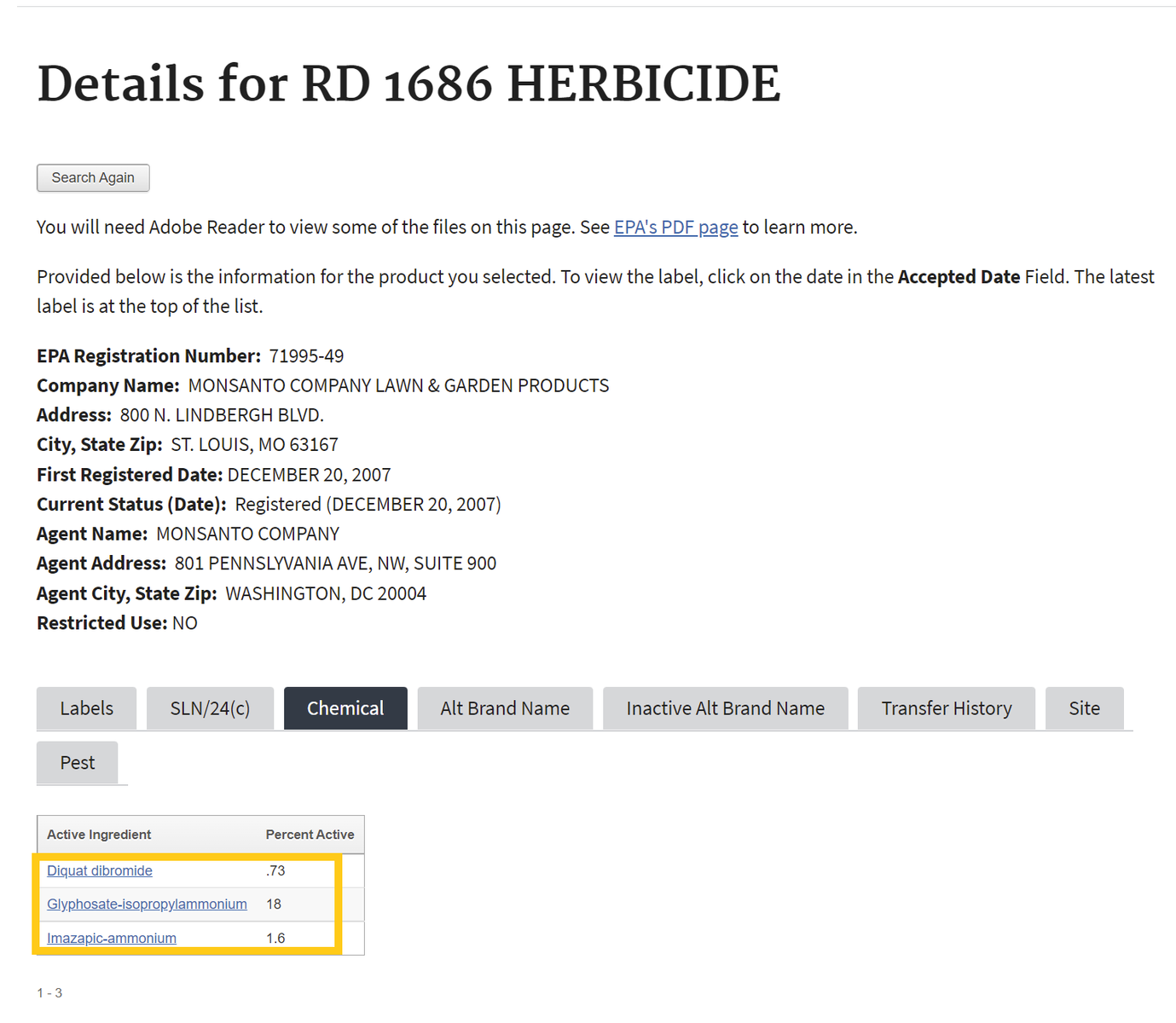
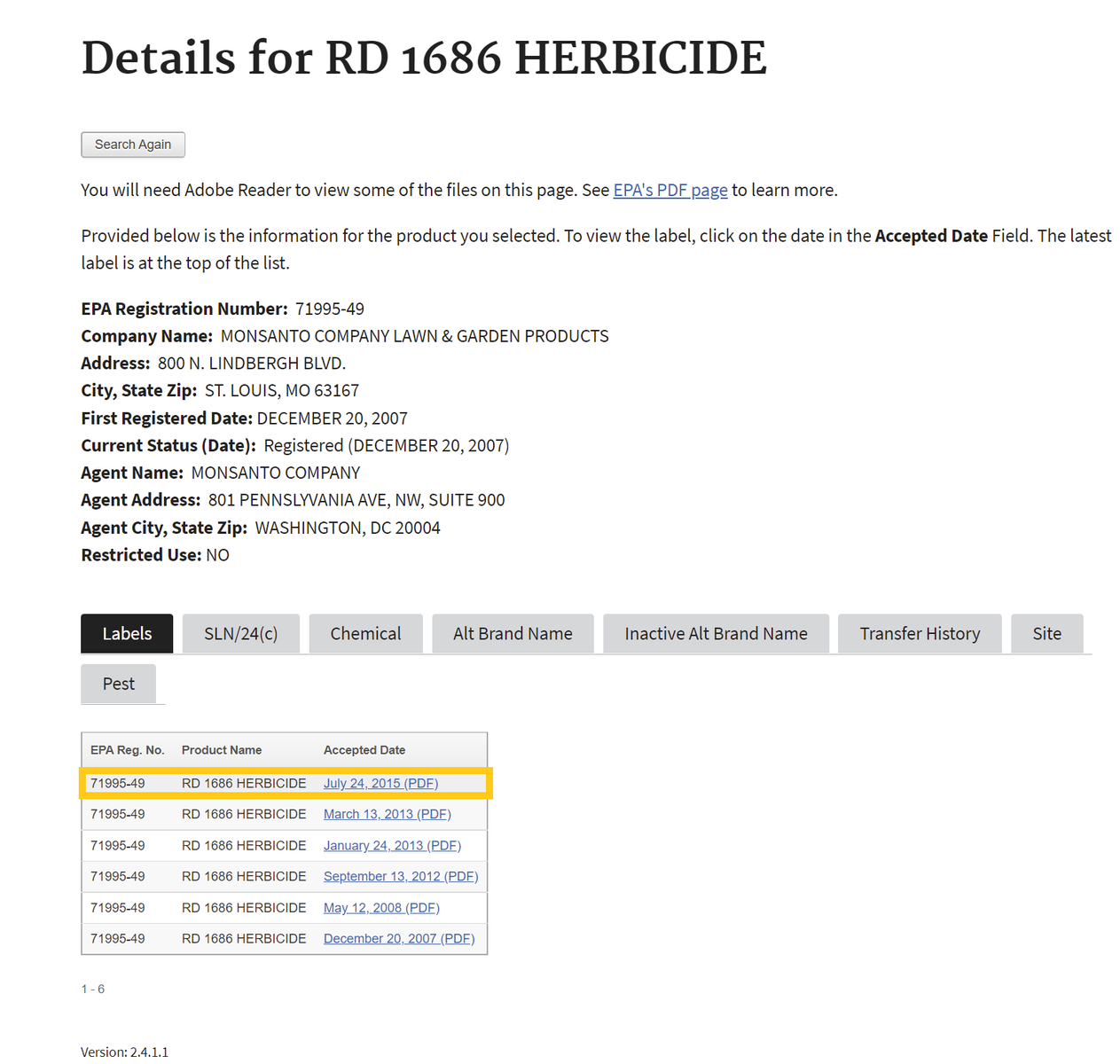
If one selects the chemical ingredients tab, skip to Step 4 . If not, proceed to step number 3 - To find the active ingredient(s) on the label, search for the page in the document containing the date of registration. Usually, the active ingredients section occurs within the first few pages of the label document.
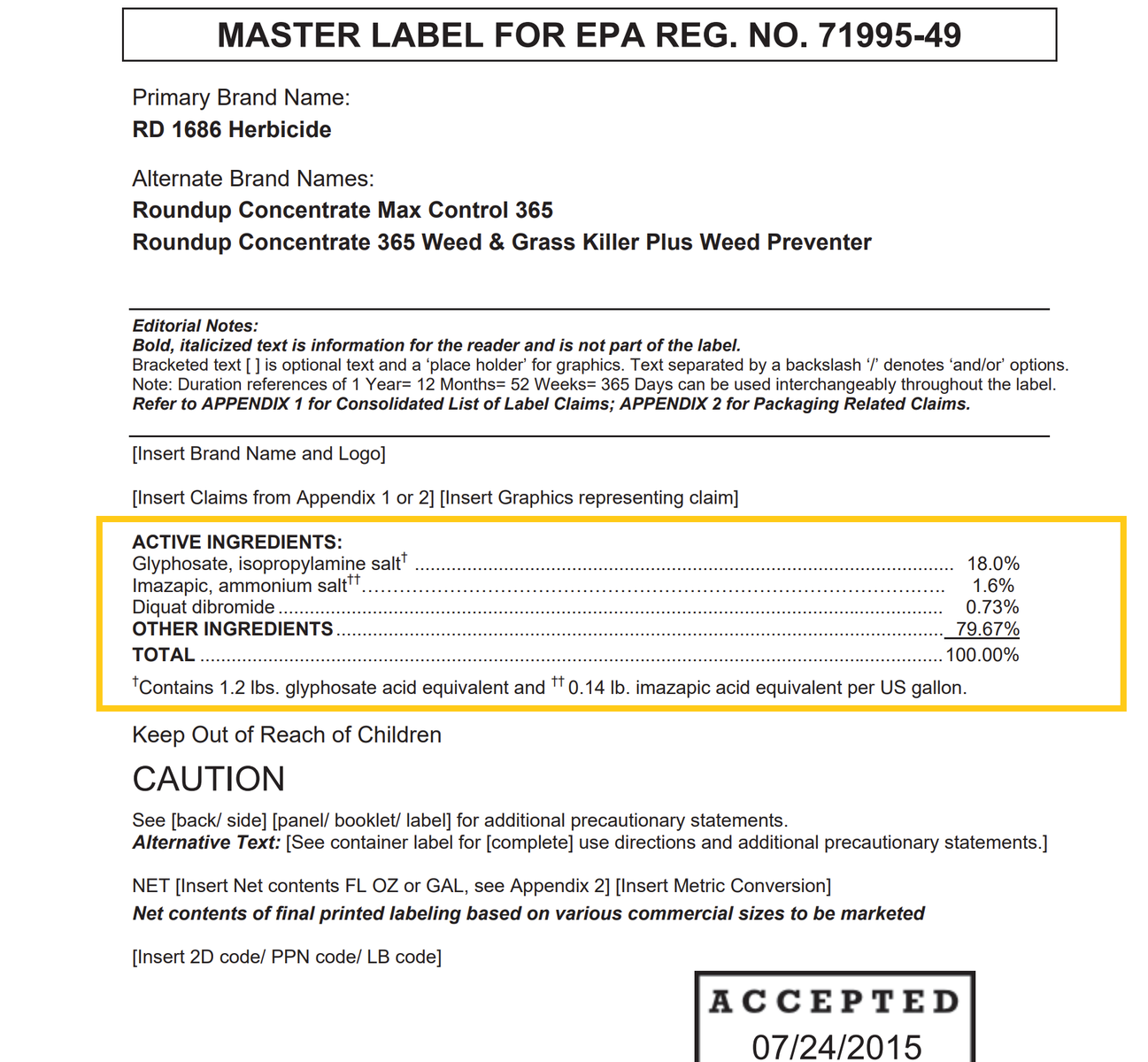
- Return to the Beyond Pesticides Gateway and search for the active ingredient name in the yellow box to the right or from the list below.
Epoxiconazole
General Information
- Product Names:
- Chemical Class: Triazole fungicide
- Uses: Not registered for use in the US. Important tolerances established for coffee and bananas.
- Alternatives: Organic Agriculture
- Beyond Pesticides rating: Toxic
Health and Environmental Effects
- Cancer: Likely (39)
- Endocrine Disruption: Yes (36)
- Reproductive Effects: Not documented
- Neurotoxicity: Not documented
- Kidney/Liver Damage: Not documented
- Sensitizer/ Irritant: Not documented
- Birth/Developmental: Yes (39)
- Detected in Groundwater: Not documented
- Potential Leacher: Not documented
- Toxic to Birds: Not documented
- Toxic to Fish/Aquatic Organisms: Yes (46)
- Toxic to Bees: Not documented
Additional Information
- Regulatory Status:
- EPA Pesticide Fact Sheet 9/2006
- Supporting information:
- PAN Pesticides Database: Epoxiconazole (Pesticide Action Network)
- FAN Factsheet: Epoxiconazole (Fluoride Action Network)
- Studies:
- Adverse effects on sexual development in rat offspring after low dose exposure to a mixture of endocrine-disrupting pesticides.. Hass U, Boberg J, Christiansen S, Jacobsen PR, et al. 2012. Reprod Toxicol.34(2):261-74
- Organic farming reduces pesticide load in a bird of prey. Fuentes, E. et al. (2024) Organic farming reduces pesticide load in a bird of prey, Science of The Total Environment. Available at: https://www.sciencedirect.com/science/article/pii/S0048969724029255.
- Major Pesticides Are More Toxic to Human Cells Than Their Declared Active Principles. Mesnage, R. et al. (2014) Major pesticides are more toxic to human cells than their declared active principles, BioMed Research International. Available at: https://www.ncbi.nlm.nih.gov/pmc/articles/PMC3955666/.
- The influence of polyethylene microplastics on pesticide residue and degradation in the aquatic environment. Wang, F., Gao, J., Zhai, W., Liu, D., Zhou, Z., & Wang, P. (2020). The influence of polyethylene microplastics on pesticide residue and degradation in the aquatic environment. Journal of hazardous materials, 394, 122517. https://doi.org/10.1016/j.jhazmat.2020.122517
- Triazole pesticides exposure impaired steroidogenesis associated to an increase in AHR and CAR expression in testis and altered sperm parameters in chicken. Serra, L., Bourdon, G., Estienne, A., Fréville, M., Ramé, C., Chevaleyre, C., Didier, P., Chahnamian, M., Ganier, P., Pinault, F., Froment, P., & Dupont, J. (2023). Triazole pesticides exposure impaired steroidogenesis associated to an increase in AHR and CAR expression in testis and altered sperm parameters in chicken. Toxicology reports, 10, 409–427. https://doi.org/10.1016/j.toxrep.2023.03.005
- Transport and interaction mechanism of four pesticide residues from Chaenomeles speciosa across Caco-2 cells. Xiao, J., Li, M., Zhang, M., Dai, K., Ju, X., Liu, Y., Liu, Z., Cao, H., & Shi, Y. (2024). Transport and interaction mechanism of four pesticide residues from Chaenomeles speciosa across Caco-2 cells. Food chemistry, 431, 137156. https://doi.org/10.1016/j.foodchem.2023.137156
- Fate of pesticide residues in beer and its by-products. Hakme, E., Kallehauge Nielsen, I., Fermina Madsen, J., Storkehave, L. M., Skjold Elmelund Pedersen, M., Schulz, B. L., … Duedahl-Olesen, L. (2023). Fate of pesticide residues in beer and its by-products. Food Additives & Contaminants: Part A, 41(1), 45–59. https://doi.org/10.1080/19440049.2023.2282557
- Pesticide residues in European agricultural soils – A hidden reality unfolded. Silva, Vera et al. “Pesticide residues in European agricultural soils - A hidden reality unfolded.” The Science of the total environment vol. 653 (2019): 1532-1545. doi:10.1016/j.scitotenv.2018.10.441








.png)
